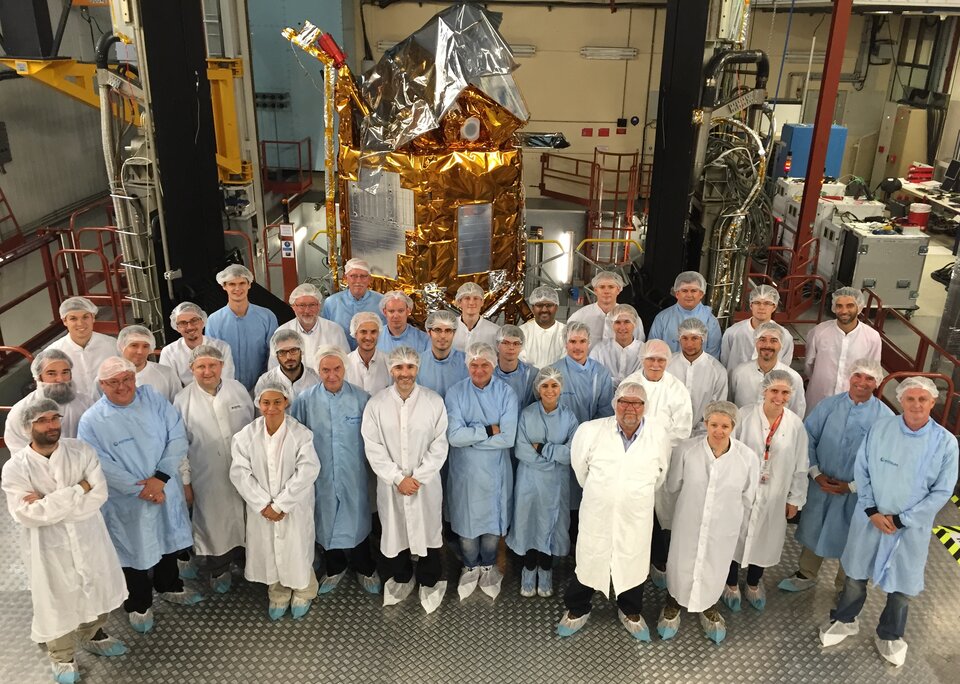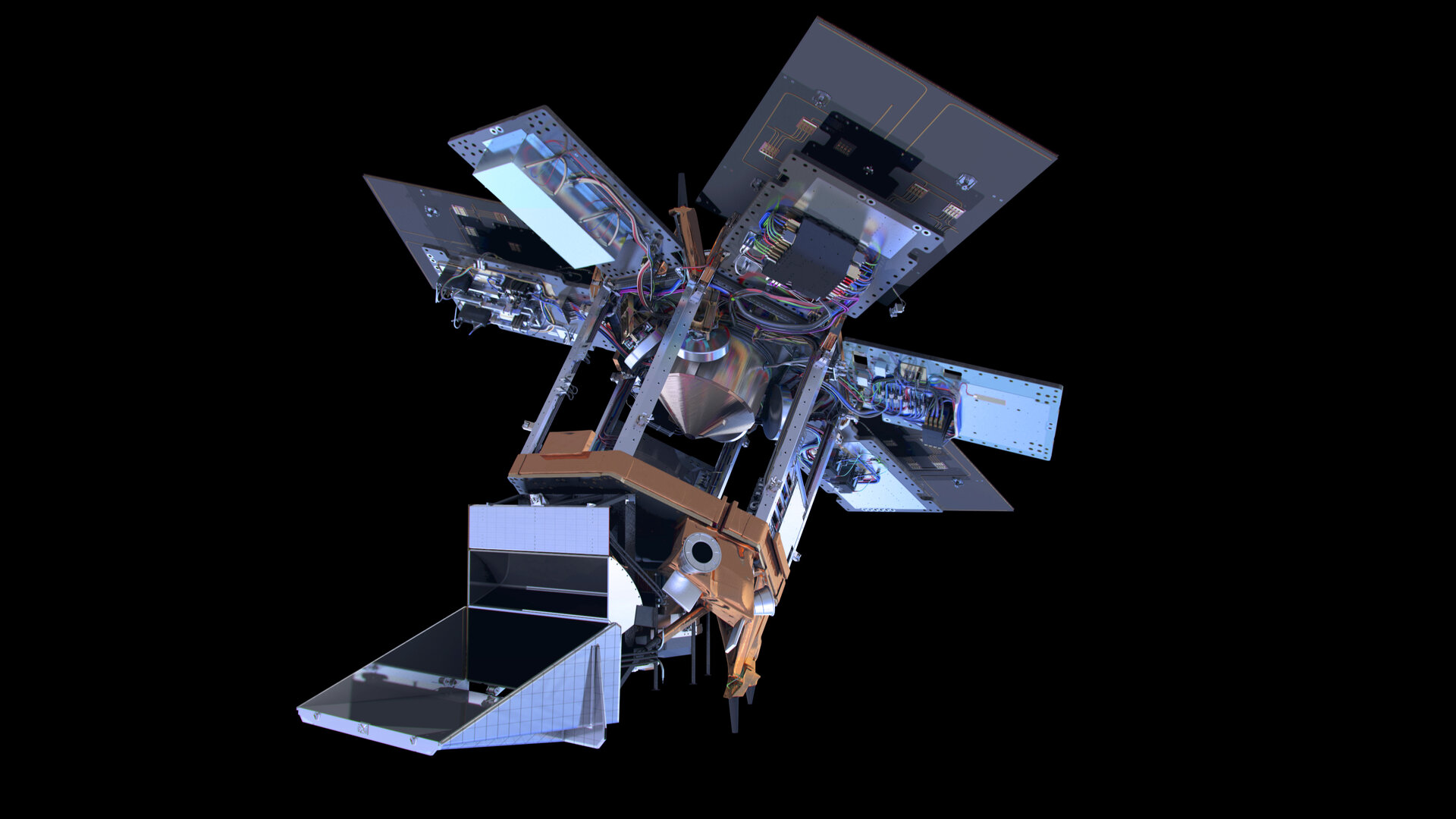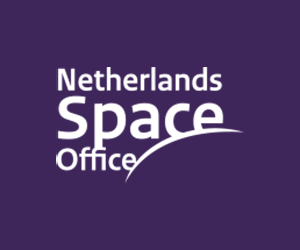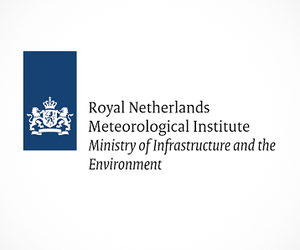Satellite
Sentinel-5P is a single satellite mission thanks to Tropomi’s 2600 km-wide swath, which allows the whole planet to be mapped every 24 hours.
The design of the satellite platform, which was led by Airbus Defence and Space in Stevenage, UK, is based on the Astrobus M. The same platform has been used for other satellites such as SPOT-6 and SPOT-7.
The mechanical platform consists of a hexagonal structure and three solar wings that are deployed once the satellite is in orbit. It houses the Tropomi sensor and instruments such as the optical assembly, radiant cooler and instrument control unit.
Tropomi is mounted on the ‘top floor’ of the platform and positioned at an angle of 30° to ensure the instrument points towards Earth. Antennas, startrackers and radiant cooler are also mounted on the top floor. The propulsion system, which is a monopropellant hydrazine system, has a capacity of 82 kg with four 1 N thrusters in two redundant pairs.

Sentinel-5P is 3.35 m high, 5.63 m across and weighs 820 kg, including fuel.
The satellite flies in a Sun-synchronous orbit 824 km above Earth and in ‘loose formation’ with the US NASA–NOAA Suomi-NPP weather satellite. Loose formation here means that Sentinel-5P flies 3.5 minutes behind Suomi-NPP and the reason for this is that the Suomi-NPP Visible/Infrared Imager and Radiometer Suite provides a colocated high-resolution cloud mask, which is important for calculating methane. However, other synergies are expected as a result of this orbit formation.
The mission is the result of close collaboration between ESA, the European Commission, the Netherlands Space Office, industry, data users and scientists. It was designed and built by a consortium of 30 companies under the leadership of Airbus Defence and Space in the UK and in the Netherlands.















 Germany
Germany
 Austria
Austria
 Belgium
Belgium
 Denmark
Denmark
 Spain
Spain
 Estonia
Estonia
 Finland
Finland
 France
France
 Greece
Greece
 Hungary
Hungary
 Ireland
Ireland
 Italy
Italy
 Luxembourg
Luxembourg
 Norway
Norway
 The Netherlands
The Netherlands
 Poland
Poland
 Portugal
Portugal
 Czechia
Czechia
 Romania
Romania
 United Kingdom
United Kingdom
 Slovenia
Slovenia
 Sweden
Sweden
 Switzerland
Switzerland


































